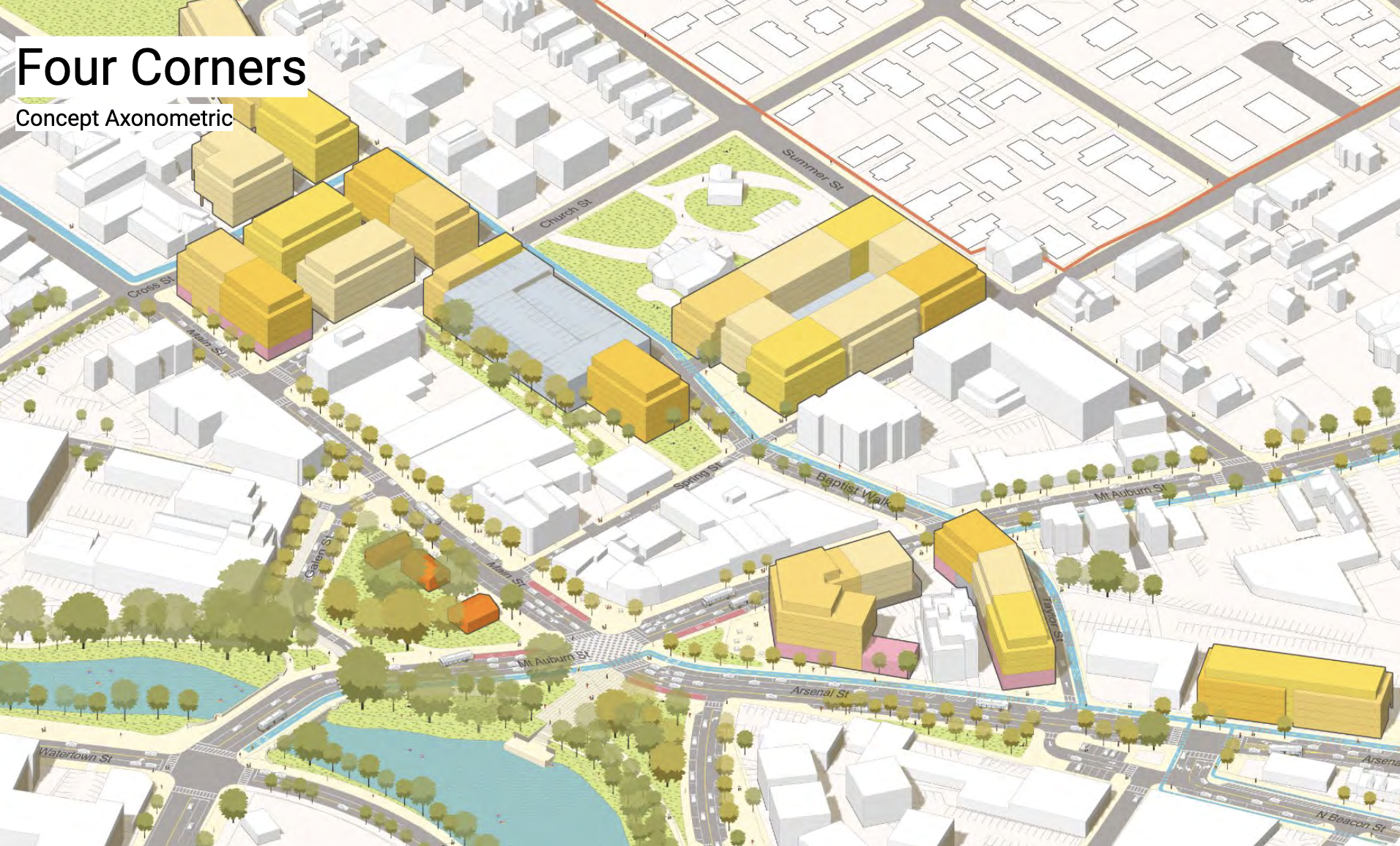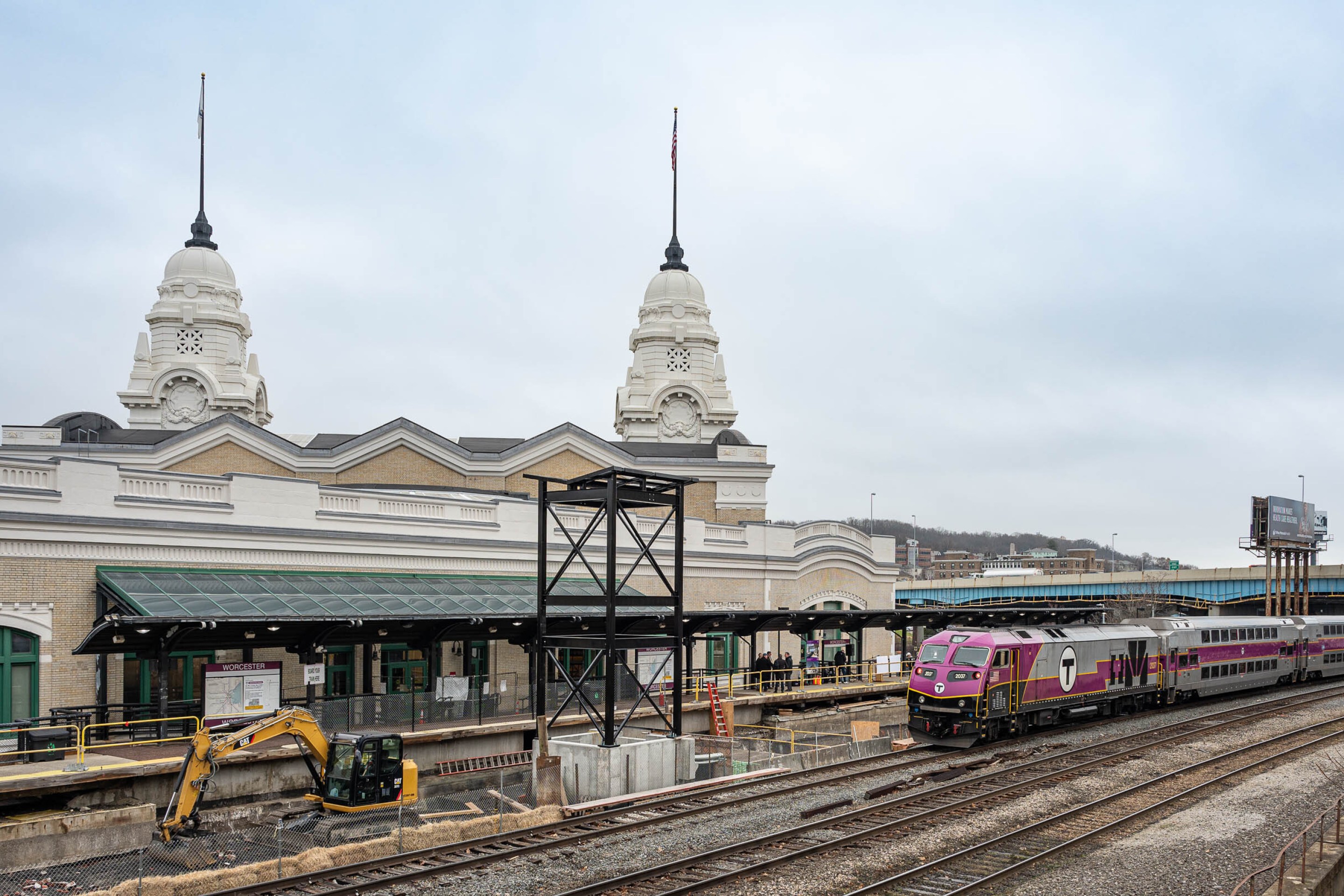MBTA Is On A Shopping Spree for Commuter Train Parking
9:56 AM EST on December 16, 2022
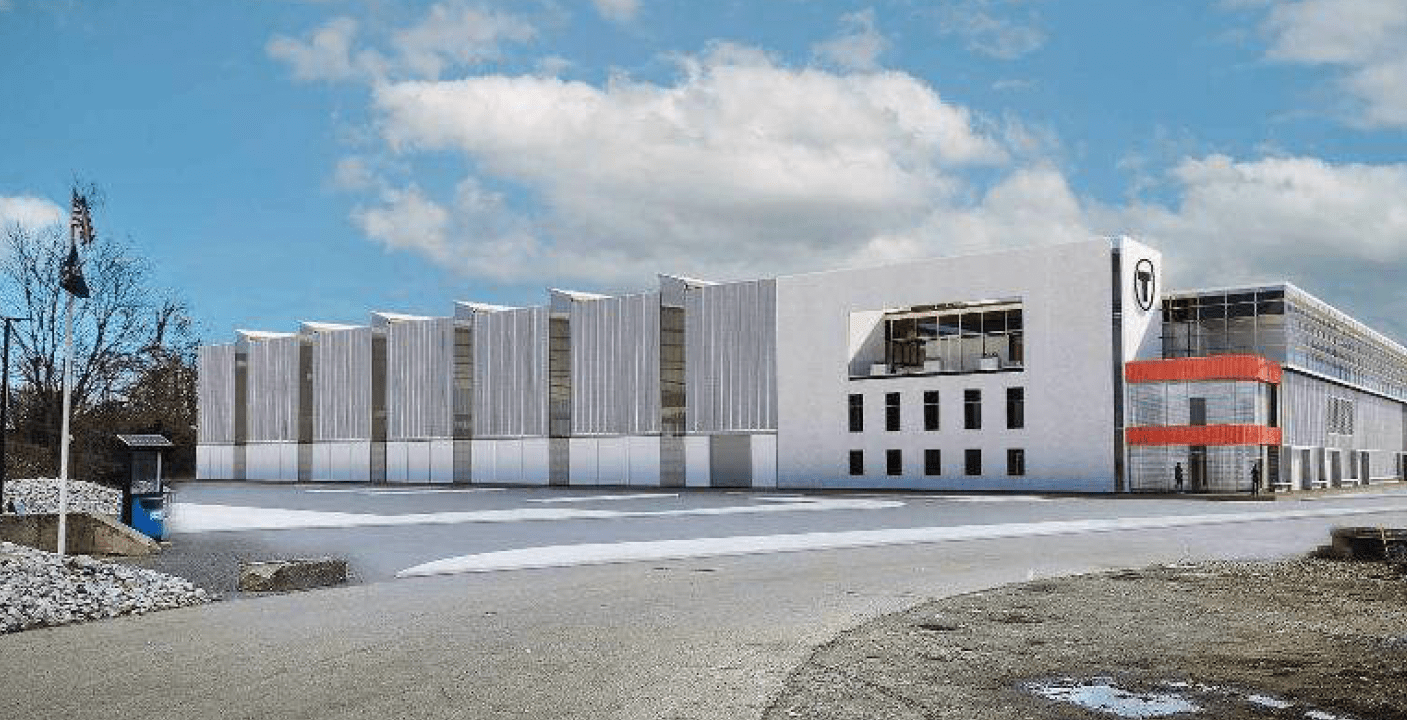
A rendering of the MBTA’s proposed South Side Maintenance Facility in Readville. Courtesy of the MBTA and Massachusetts Environmental Policy Act Office.

On Thursday, the MBTA Board of Directors gave the green light for the T to spend a quarter-billion dollars to acquire Widett Circle, a 24-acre former food distribution center between Interstate 93 and the T's Cabot Yards, to store commuter rail trains near South Station.
During Thursday's monthly meeting of the MTBA board of directors, T officials told board members that the acquisition would support the agency's ability to increase commuter rail service, including new South Coast Rail services and new electrified regional rail services.
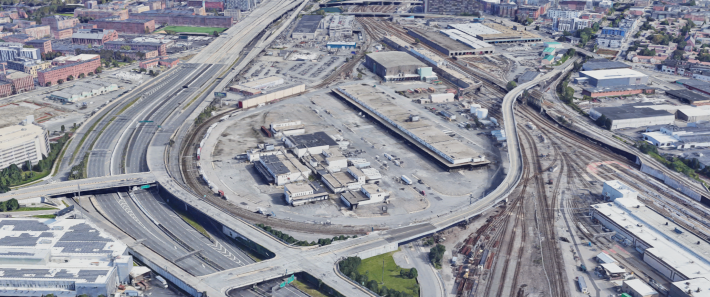
Richard Henderson, the MBTA's Chief Real Estate Officer, told board members that "it's less than a mile from South Station and it provides direct rail access immediately adjacent to the MBTA's service and inspection facility... It will reduce the time that trains must layover at South Station, which will increase capacity for additional revenue service."
The T has been eyeing Widett Circle for a new railyard several years now. The agency sees the property as a necessary condition for its multi-billion-dollar plan to build additional train platforms at South Station.
The T actually prepared a conceptual plan for a train layover yard in Widett Circle when it sought environmental approvals for the South Station Expansion project in the mid-2010s. That concept showed more than two dozen storage tracks occupying the entire teardrop-shaped property:
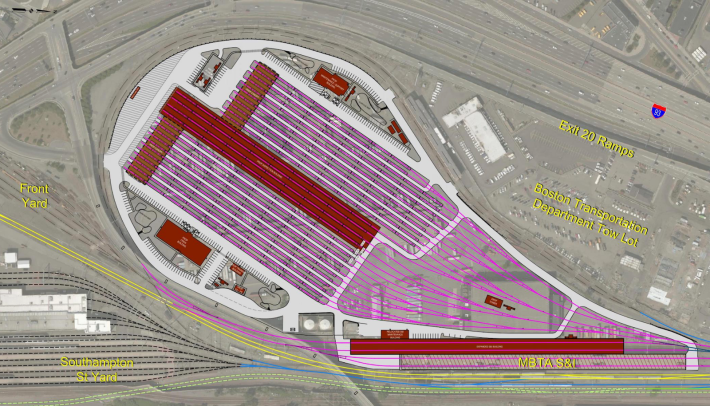
At Thursday's board meeting, MBTA General Manager Steve Poftak called the property "a foundational element for a lot of the ideas and thinking about the future of commuter rail. They are not creating new land in downtown Boston, and this is the opportunity to secure this parcel once and for all."
However, the South Station expansion plan predates the T's new "rail vision" plans, which call on the agency to run more service all day long, instead of focusing on peak-hour commuter service that requires trains to sit unused during the middle part of the day.
In 2019, TransitMatters, a local transit advocacy organization, published a report that argued that the South Station expansion and inner-city layover yards like the ones being proposed at Widett Circle would be unnecessary if the T moved to a more frequent, all-day service model.
"In our judgment, spending to build a multi-track layover yard on land that's currently valuable for logistics and is some of the most highly valued in New England is a poor use of funds," wrote Johnson in an email to Streetsblog on Thursday. "If there is a layover shortage, layovers should instead be distributed throughout the system, and if the T is serious about a transition to a more efficient way of operating commuter rail, it needs to shift away from this thinking."
According to recent filings with the Massachusetts Environmental Policy Act, the T is planning to build another new layover yard, plus a large new commuter rail maintenance building, at its Readville station near the border of Boston and Dedham.
Currently, the T services all its commuter rail trains at a single maintenance facility in East Somerville, and relies on the little-used Grand Junction rail line to move trains between that facility and its south-side commuter rail lines that run into South Station.
But the planned Allston Multimodal Project is expected to cut off the T's access to the Grand Junction line for several years when that project begins construction later this decade.
Additionally, "with the requirements for increased fleet size and modernization of technologies, the MBTA is in need of a new full-service maintenance facility on the south side, with the ability to handle both routine maintenance and inspections, as well as heavy repairs," according to the T's environmental filings for the proposed South Side Maintenance Facility.
The T is proposing to replace an existing 13-track layover yard near its Readville commuter rail stop with a new 177,000 square-foot maintenance facility, similar to the one it already has in East Somerville.
This project would be built on top of an existing layover yard where the T stores up to 13 trains overnight. The T plans to acquire an 8.6-acre scrap yard next door and build a new, similarly-sized layover yard there, then build its new maintenance facility on the site of the existing layover yard:
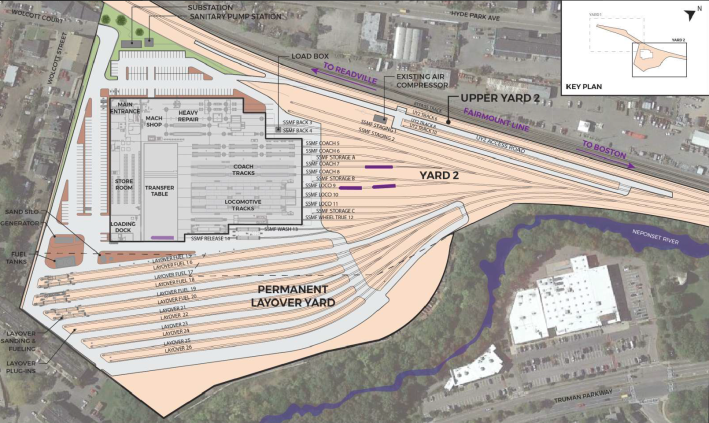
This facility would be adjacent to the electrified Providence Line, and the T's environmental filings assert that the new facility would help the T transition to an electrified commuter rail system with the "ability to provide maintenance and repair of Electric, Dual mode and Battery locomotives to accommodate the next generation of MBTA locomotives."
The T hopes to build the South Side Maintenance Facility in phases between 2023 and 2027.
For now, it's not clear how the T will pay for all of this new train parking.
The T's budget planners have been raising alarms about severe budget shortfalls in the years to come, and earlier this year, the Federal Transit Administration criticized the T for transferring money out of its operating and maintenance budget to spend more on big-ticket capital projects like these.
The T's most recent capital budget, approved in spring 2022, included just $70 million for "future regional rail layover planning," described as "planning, design, environmental and real estate due diligence, and construction work for a new Commuter Rail layover facility (including) operational and space needs assessment, design alternatives, and property prospection."
The South Side Maintenance Facility is not funded in the MBTA's current capital budget, but in 2020, former MassDOT Secretary Stephanie Pollack said that the project could cost approximately $300 million.
At Thursday's board meeting, just before the board voted to spend up to $155 million to buy Widett Circle, MassDOT Secretary Jamey Tesler promised that the state government "is matching resources that were already in the approved (capital investment plan), so we're are able to move forward without any additional T resources, other than those already programmed and planned."
"We're taking advantage of this opportunity, and we're getting considerable help from our partners at MassDOT and the Commonwealth," said Tesler.
This story was corrected on Friday Jan. 13, 2023 to correct the board-approved purchase price for Widett Circle in the second-to-last paragraph. Because of the editor's error, the previous version erroneously stated that the cost was $255 million, not $155 million.
Stay in touch
Sign up for our free newsletter
